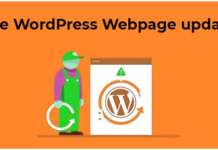Ah, the sound of ka-ching – music to my ears. Today, cash registers are connected to a computer system called point of sale systems. This information is true even for small businesses. Why? Because unlike its traditional forerunner, it just doesn’t cash-in: it also provides key real-time information about your customers, sales, products and inventory.
The Essence of POS Systems
Point of sale systems come with a standard computer and specialized POS software. They can be configured for different industries. For instance, POS software for restaurants, cafes or bars. They also come with a cash drawer, receipt printer, credit card scanner and credit card reader. More peripherals can be added as a business’s requirements grow. Typical price is around $1,200.
Inventory Tracking
One of the biggest pros of a POS system is the option to get a real-time and accurate assessment of your inventory. The goods sold are immediately subtracted from your inventory every time a customer checks out.
Moreover, you’ll never have to spend a tiresome chore of tracking everything from your store no matter how large you inventory is. One of the best things about a reliable POS system is that it can send you a notification when an item is at re-order point.
A POS is a constellation of things that together enable you to process customer-facing transactions efficiently. It is not a standalone machine or process. It can streamline business processes connected to your sales.
The setup
The setup will vary in terms of appearance and functionality depending on your choice of technology, whether you print paper receipts, what payment methods you accept, how you record sales and organise end-of-day bookkeeping, and the inventory systems you have in place for your products.
Processing customer transactions
Let’s go right back to the basics and talk about how customer transactions have been processed. What does a POS system typically consist of? What are some of the options now available to businesses?
Up until 15 years ago, a point of sale system was nothing more than a cash register in its most basic form. The earliest cash registers wouldn’t even fathom what products cost. The person operating the till would enter the prices of purchased items manually, often with the help of price tickets. Then, he or she would take the money, put it in the cash drawer, and hand the customer a paper receipt.
Sometimes, the only record of the transaction would be the paper copy of the till roll. As POS systems grew and developed, they became more computerised, storing a product database on a computer server.
There was often no need for manual price entry because they would include a barcode reader while also storing transaction details electronically.
Fast Forward to 2019
Things are far more sophisticated in our day and age. Many retailers are moving on to advanced cloud-based POS systems where data is stored online. Of course, plenty of them use systems as described above.
Key elements of a POS system
Today’s POS systems consist of hardware and software components. Basically, software registers, processes and stores transaction details. There are some key differences in how details are stored and used between different POS software systems.
All POS systems today have a frontend interface for the point of sale and a backend side for behind-the-scenes analytics and management functions.
The staff processing the transactions uses the frontend interface, normally on a table screen or touchscreen monitor. They access the backend separately in a browser or application window either on the same device or separate computer or mobile device.
Those two will be connected and synced regardless of your type of POS software. Data can be stored in two ways:
Cloud-based
Also called software-as-a-service (SaaS), this system is automatically maintained and updated by your POS provider, although it is always recommended you’re using the latest version of the POS app.
System is hosted online, i.e. data are stored on your POS provider’s internet servers, enabling you to access it from any computer browser.
On-site
Software is installed ‘locally’ on your own server, i.e. on a computer based on the premises of your store.
You’ll need to maintain and manually update this kind of software.
Requires you purchase one or more software licences.
As all the software is based in your closed computer network, it does not require the internet.
Final thoughts
On-site POS software has been the norm for computerised POS systems for some time now, but it is now more common to use cloud-based or hybrid systems relying on both the internet and local hosting. On-site POS software tends to be costly to set up, often requiring professional assistance and maintenance.
Cloud-based systems tend to be less expensive (usually paid as a fixed monthly cost) and offer more options to integrate with other software programmes.
POS applications can differ a great deal in terms of what features and layout they have. Each business sector has its own requirements that specialized POS applications accommodate for. For example, restaurants need a table layout to attach orders to. In order to make it possible for diners to order at their tables before being served, restaurants may want a self-service menu interface. Specialized restaurant POS apps can provide this option and many others as part of the same package.
A diner can connect an on-site server enabling the software to function when the internet is down and sync the data in the cloud when the internet is back up and running if it has primarily chosen a cloud-based POS system, but their internet is not 100% reliable. This allows franchises to benefit from a cloud-hosted system where they can monitor all sales data across the locations in real time from any Internet browser, while also relying on local hosting as a backup.
As an alternative option, some cloud POS software offers an offline mode that keeps the POS functioning while there is no Internet access, and then syncs all the new data with the backend when the local system is back online.
Read more such articles on https://toppossystem.com.








